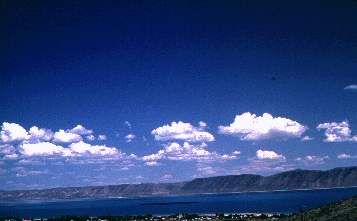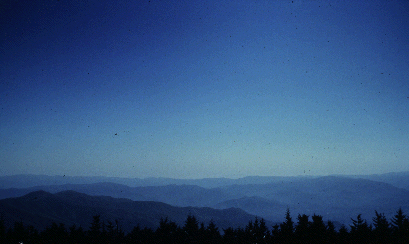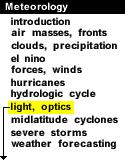
|
Blue skies are produced as shorter wavelengths of the incoming visible light (violet and blue) are selectively scattered by small molecules of oxygen and nitrogen -- which are much smaller than the wavelength of the light. The violet and blue light has been scattered over and over by the molecules all throughout the atmosphere, so our eyes register it as blue light coming from all directions, giving the sky its blue appearance.

Photograph by: Holle
Blue haze is a phenomenon commonly observed in the Smoky Mountains of eastern Tennessee and the Blue Ridge Mountains of Virginia.

Photograph by: Young
As tiny hydrocarbon particles released by vegetation chemically react with ozone molecules, they produce particles that selectively scatter blue light, giving the mountains their blue appearance.

crepuscular rays |
|

sunsets |




